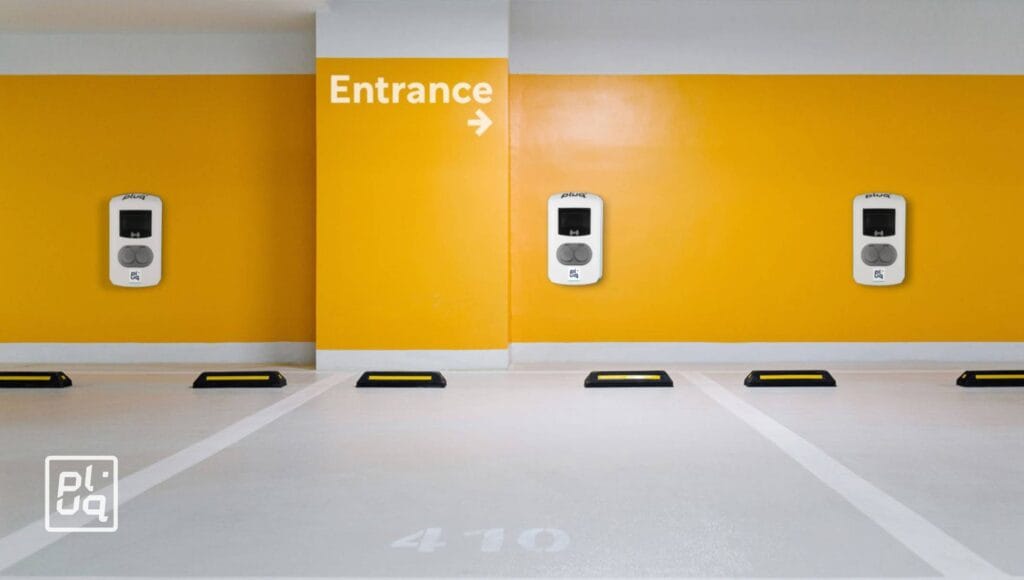Across the EU, medium and large enterprises face increasing expectations to reduce their environmental footprint. Implementing the Corporate Sustainability Reporting Directive (CSRD) requires companies to disclose detailed information about their environmental and social impact, including carbon emissions from employee commuting and vehicle fleets.
This article outlines how destination charging supports CSRD compliance while also offering long-term benefits for real estate owners and businesses.
The path to climate neutrality
The European Union aims to achieve climate neutrality by 2050. The CSRD is a significant step toward that goal, requiring companies to report in accordance with the European Sustainability Reporting Standards (ESRS). This includes insights into emissions related to business operations, energy use, and mobility.
Nearly 50,000 companies fall under the CSRD requirements, including publicly listed firms, large private enterprises, and non-EU companies active in the European market. Moreover, supply chain pressure is rising: clients are even asking SMEs to share their sustainability performance.
Commuting and corporate emissions
One big contributor to corporate emissions is employee commuting, which accounts for up to 70% of total emissions in some organizations. National policies are emerging, such as the Netherlands’ reporting obligation for employers with over 100 employees, requiring data on all business and commuting travel.
Reducing travel emissions begins with enabling change: promoting remote work, offering cycling incentives, and encouraging electrified commutes. This is where destination charging becomes essential.
Why Destination Charging Matters
Unlike fast charging on highways, destination charging allows EV drivers to charge where they spend several hours, such as offices, hospitals, hotels, or logistics hubs. This approach aligns with typical work patterns, reduces pressure on public infrastructure, and maximizes efficiency by using lower power over longer durations.
Destination charging is both a practical solution and a compliance asset for businesses. It supports low-carbon mobility while generating measurable data for CSRD reporting.
The impact of EV adoption on CSRD goals
Electric vehicles (EVs) powered by green energy emit up to 70% less CO₂ than traditional combustion vehicles. By transitioning to electric fleets and encouraging employees to drive electric vehicles, companies can significantly reduce their Scope 1 and Scope 3 emissions.
Installing EV chargers on-site enhances this strategy. It also ensures employees and visitors can charge during the workday, removing barriers to EV adoption and improving operational efficiency.
Making it work: From cost to opportunity
While installing EV infrastructure can seem complex or costly, Charging as a Service (CaaS) models remove those barriers. Providers like Pluq offer turnkey charging solutions—from hardware to software, with no upfront investment.
Benefits include:
- Scalable infrastructure tailored to your property
- Load balancing to manage energy use smartly
- Integration with energy systems (e.g., solar, battery, building management)
- Transparent data for ESG and CSRD reporting
This transforms parking spaces into low-emission mobility hubs, fully aligned with long-term sustainability goals.
Practical advice for C-level executives
- Start with a clear sustainability plan. Set targets aligned with CSRD and identify how mobility fits into your strategy.
- Assess your property’s capacity. Understand current grid limitations and explore smart charging as an alternative to expensive upgrades.
- Partner wisely. Work with a provider that understands both the technical and reporting sides of charging infrastructure.
- Think long-term. Look for future-proof solutions — with modular expansion, energy integration, and ongoing service.
Destination Charging as a strategic asset
Destination charging isn’t just about electricity — it’s about future-ready infrastructure that meets environmental targets and adds value to your property. With CSRD changing the sustainability landscape, charging stations can help meet compliance while also driving loyalty, revenue, and reputational gains.
For real estate owners and business leaders, investing in EV infrastructure is not only the right thing to do—it’s a smart move.
Curious how destination charging fits into your sustainability roadmap?

